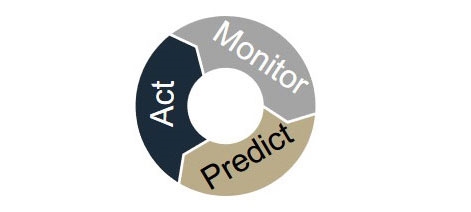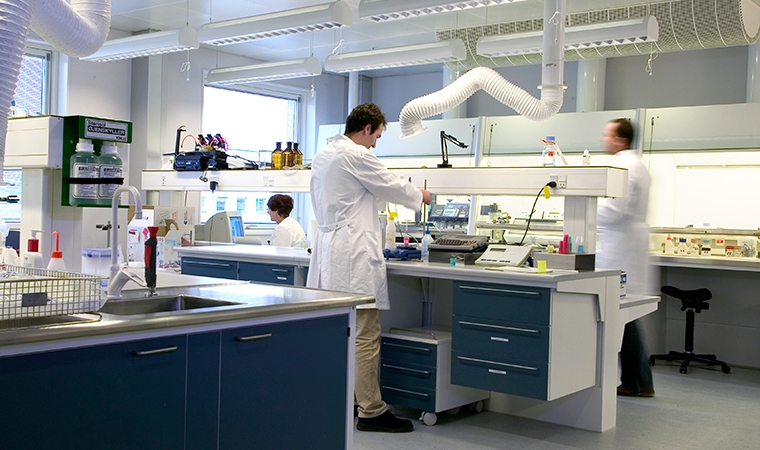In October 2018, FDA published an update on some ongoing initiatives. While the initiatives are not new, the real implementation is now beginning. All of these are part of the ambition and demand put forward by Janet Woodcock in 2005:
A maximally efficient, agile, flexible pharmaceutical manufacturing sector that reliably produces high quality drugs without extensive regulatory oversight”
Risk-based inspections based on quality metrics programs
The FDA is urging pharma manufacturers to develop a quality culture. The goal is to increase quantitative and objective insight into the state of quality for products and facilities. This includes a new approach for regulatory oversight of pharmaceutical products to enhance a risk-based surveillance inspection scheduling model and improve the effectiveness of inspections.
Additionally, the FDA hopes that this initiative will help identify factors leading to supply disruption/shortage.
Two new efforts are underway to support this:
A feedback program
The FDA is seeking information from drug manufacturers that have implemented and are currently using quality metrics programs. Any data shared is for demonstration/informational purposes only. The pilot program will run until 29 July 2019.
A site visit program
The goal of the site visit program is to provide on-site learning for FDA staff on industry use of quality metrics. At the same time, it aims to provide stakeholders with the opportunity to explain the advantages and challenges they’ve experienced with their quality metrics programs.
Emerging technologies
The FDA’s Emerging Technology Team focuses on understanding new science and technologies. The goal of putting together this team is to support the industry’s development and implementation of innovative approaches in pharmaceutical design and manufacturing (e.g. continuous manufacturing, 3D printing, closed aseptic filling systems, ultra-long-acting formulations).
Another focal point is to identify and resolve potential scientific and political issues related to new approaches in manufacturing. This will help FDA reviewers familiarise themselves with new technology and determine how to evaluate it within the existing regulatory framework to speed up innovation.
The FDA has also developed a website and "Guidance for Industry", which are both worth checking out.
The FDA continues to work with industry partners through stakeholder meetings and interactions and plans to work with other regulatory agencies and industries to develop common guiding principles for Continuous manufacturing through ICH (ICH Q13).
ICH Q12 lifecycle management
The FDA is working towards regulatory harmonization. This will increase the speed of post-approval changes to manufacturing internationally and will further encourage manufacturers to make improvements, increase process robustness and facilitate change implementation.
The objectives of ICH Q12 are to:
- Harmonize change management in a more transparent and efficient manner
- Facilitate risk-based regulatory oversight
- Emphasize control strategy as a key component of the dossier
- Support continual improvement and facilitate innovation
- Enhance use of regulatory tools for prospective change management enabling strategic management of post-approval changes
The commenting period for the draft guideline ended in December 2018
Improving FDA review process
FDA has set up the Knowledge-Aided Assessment and Structured Application (KASA) program to develop an enhanced submission format for quality submissions to improve the efficiency and consistency of regulatory quality assessment. FDA presented this enhanced submission format at the PDA/FDA joint regulatory conference in September 2018.
The KASA system uses IT structures to move away from paper-based review to be able to:
- Capture and manage knowledge – such as established conditions – during the lifecycle of a drug product
- Establish algorithms for risk identification, mitigation and communication
- Perform computer-aided analyses of applications to compare regulatory standards and quality risks across approved applications and facilities
- Provide a structured assessment tool that radically eliminates text-based narratives and summarisation of provided information
European Initiatives 2025
Shortly the EMA presented its strategic reflection paper: Regulatory Science to 2025
In this document, the EMA proposes its action plan for the upcoming years, ensuring that both people and animals in Europe have timely access to medicines that are safe, effective and of suitable quality, as well as the information needed to use those medicines and make informed choices about their treatment.
In principle, it reflects the same thoughts as the FDA.
The Agency sees the following challenges:
- How ready are we to engage with these emerging scientific and technological innovations? E.g. big data, precision medicine, novel manufacturing, novel clinical trials design, the revolution in synthetic biology.
- Do we have the necessary skills and competencies, or indeed access to the specific expertise required?
- Are we generating new guidance or providing sufficient levels of advice to facilitate the utilization and translation of these innovations?
The following strategic goals are defined for human medicines:
- Catalyzing the integration of science and technology in medicines development. This means, for example, to support developments in precision medicine, biomarkers, and ATMPs but also to facilitate the implementation of novel manufacturing technologies, including nanotechnology and new materials in pharmaceuticals.
- Improving the scientific quality of evaluations with the goal to foster innovations in the fields of clinical development and clinical trials.
- Advancing patient-centered access to medicine in partnership with healthcare systems.
- Addressing emerging health threats and availability/ therapeutics.
- Enabling and leveraging research and innovation in regulatory science.
The EMA is aware that the current GMP guidelines are not flexible enough to facilitate new manufacturing technologies and novel therapies, and regulators will need new expertise to give adequate advice.
As a consequence, it will be necessary to "facilitate a flexible approach in the application of good manufacturing practice".
So what does this mean?
Within the next 5 to 10 years, the world of pharma will change significantly. New technologies, novel manufacturing techniques and novel therapies – especially patient-specific therapies – will arise more and more.
The regulators (worldwide) are aware of that and clearly facilitate these developments. In consequence, key innovations in science and technology are likely to impact the regulatory systems which are currently poorly suited for the future. For that, adaption and changes to GMP requirements and standards and the development of specific regulatory guidance and monitoring will be necessary in the future.
At NNE, we provide“seamless GMP” and will keep our customers on track.


